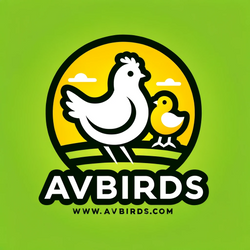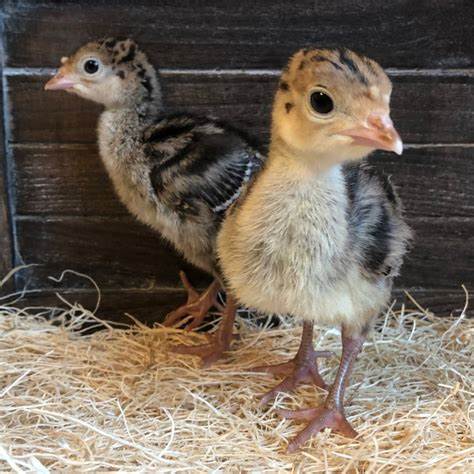Introduction
The first four weeks of a turkey poult’s life determine its strength for months to come. A well-designed brooder keeps them warm, dry, and thriving. Whether you’re raising Bourbon Reds or Royal Palms, this guide from AV Birds shows how to create the perfect environment for your young flock.
1. Brooder Box Basics
The brooder is the temporary home for your poults until they’re fully feathered (about 6 weeks). Size matters: start with 1 sq ft per poult and expand as they grow. Use plywood, plastic bins, or stock tanks with solid walls to block drafts.
Essentials:
-
Heat source (heat lamp or brooder plate)
-
Bedding (pine shavings)
-
Thermometer & hygrometer
-
Chick feeder & waterer
(External link: Cornell Extension – Poultry Brooder Design)
2. Temperature and Lighting
Turkey poults need higher heat than chicks.
| Week | Brooder Temp °F | Notes |
|---|---|---|
| 1 | 95 °F | Directly under lamp |
| 2 | 90 °F | Raise lamp slightly |
| 3 | 85 °F | Observe behavior |
| 4 | 80 °F | Ready for outdoor time |
Adjust light so poults can see feed and water but have a dark corner to rest.
3. Bedding and Sanitation
Use pine shavings (no cedar) 2–3 inches deep. Change daily for the first week, then every other day. Avoid slick surfaces — they cause leg splay. Add a sprinkle of diatomaceous earth to reduce odor and parasites.
4. Feeding and Watering
Start with 28 % protein game bird starter feed formulated for turkey poults. Feed free-choice 24/7 for the first two weeks.
Add electrolytes or vitamins to drinking water for hydration and immune support. Shallow waterers prevent drowning.
(External link: University of Kentucky – Poultry Feed Guide)
5. Space and Ventilation
Good airflow reduces ammonia buildup and disease. Use screened lids or mesh tops for fresh air while keeping predators out. Avoid placing the brooder in direct sunlight or drafty areas.
By week 3–4, poults should have 2 sq ft each and occasional supervised outdoor time on warm days.
6. Recognizing Poult Behavior
Happy poults: active, chirping lightly, spread evenly under heat.
Too cold: huddled together, loud peeping.
Too hot: scattered far from lamp, panting.
Use behavior to fine-tune temperature more reliably than a thermometer alone.
7. Preventing Health Problems
-
Keep water clean and feed dry.
-
Introduce fresh greens after 3 weeks.
-
Add small grit for digestion.
-
Avoid mixing with chickens early on (blackhead disease risk).
(External link: Merck Vet Manual – Turkey Poult Diseases)
8. Gradual Transition to Outdoors
At 4 weeks, if night temps stay above 65 °F, begin short outdoor sessions in a safe pen. This helps poults adapt to natural light and build immunity. Full move to the coop can occur around 6 weeks when they’re mostly feathered.
9. Why AV Birds Poults Thrive Better
Our Bourbon Red and heritage turkey poults come from strong, disease-free breeding lines and are raised under strict biosecurity. We ship nationwide with safe transit boxes and provide personal guidance to help new owners succeed.
(Internal link: Shop Turkey Poults at AV Birds)
Conclusion
The first month of a turkey poult’s life sets the tone for its entire growth journey. With a properly equipped brooder, clean conditions, and quality feed, you’ll raise robust, friendly birds ready to thrive on your farm. Visit AVBirds.com to get started with healthy heritage poults and supplies today.

